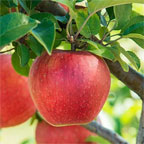- Q.Monkshood Perennial Was Removed From A Flower Bed, I Am Making It A Vegetable Bed. Is Soil Safe. - I had Monkshood perennial in my flower garden for 2-3 years. I removed it from this spot because I want ...
- Q.Leaf Rollers In Monkshood - I usually treat them with sevin powder but that product no longer available in Alberta. In ally found some BTK ...
Q.Monkshood Perennial Was Removed From A Flower Bed, I Am Making It A Vegetable Bed. Is Soil Safe.
I had Monkshood perennial in my flower garden for 2-3 years. I removed it from this spot because I want a vegetable garden there instead . Is my soil safe, now that plant was removed? It came out very easy. It has only been two days , but it is doing fine in its new spot away from my now vegetable garden.
- A.
I did find a notation not to plant it near a vegetable garden where plants with tubers were located. People might confuse the fleshy tubers of Monkshood with a vegetable such as Jerusalem artichokes. But I didn't see any reference to the poisons leeching into the soil.
https://plants.ces.ncsu.edu/plants/aconitum/
http://www.missouribotanicalgarden.org/PlantFinder/PlantFinderDetails.aspx?kempercode=h300
Was this answer useful?00
Q.Leaf Rollers In Monkshood
I usually treat them with sevin powder but that product no longer available in Alberta. In ally found some BTK and sprayed it on today. I should hv done this weeks ago and now I’m afraid it’s too late. If I cut the plants back will they regrow and produce blooms?
- A.
This lovely, toxic plant should bloom again in the fall. If you prune them carefully and keep the spent flowers plucked it should be alright. Here are a couple articles:
https://www.gardeningknowhow.com/ornamental/flowers/monkshood/growing-monkshood-plants.htm
https://www.gardeningknowhow.com/plant-problems/pests/insects/leafroller-damage-control.htmWas this answer useful?00



